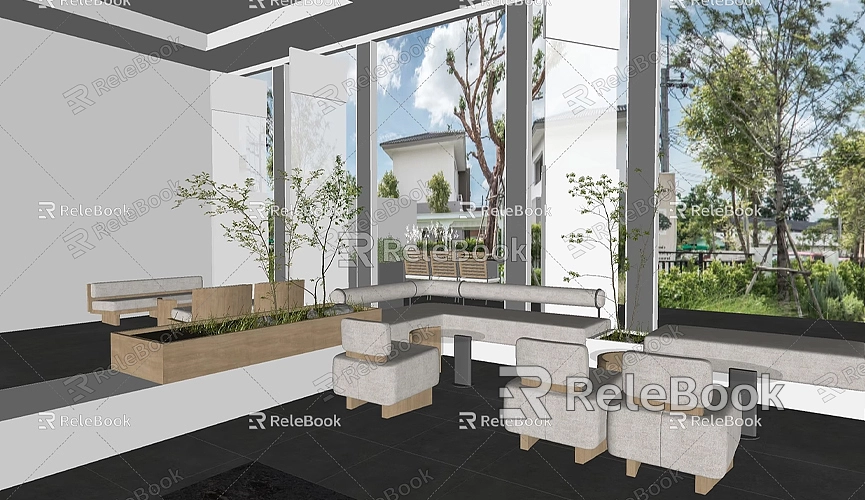How to Convert Rhino Models to SketchUp
In the workflow of 3D modeling, different software excels in various areas—Rhino is great for surface modeling, while SketchUp is better suited for architectural design and rapid creation. Often, we need to convert models from Rhino to SketchUp to leverage the strengths of both programs for our projects. Mastering the conversion process between these two applications is a valuable skill, whether for architectural design, furniture making, or product development. This article will explain how to import Rhino models into SketchUp and detail important considerations throughout the process.
Why Convert Models Between Rhino and SketchUp?
Both Rhino and SketchUp are powerful 3D design software, each with unique advantages. Rhino is renowned for its robust NURBS surface modeling capabilities, ideal for creating complex curves and high-precision models, while SketchUp is widely used for its user-friendly interface and quick modeling functions in architectural design and sketching.

In projects, you might create complex models in Rhino first and then build scenes and final presentations in SketchUp. This workflow combines the benefits of both tools, provided you are skilled in converting models between the two.
Preparing the Rhino Model
Before exporting a Rhino model to SketchUp, it’s essential to organize and clean up the model. A well-organized model can prevent various issues during conversion. Check the layering of the model and place different objects on their corresponding layers, making editing in SketchUp more manageable. Additionally, delete any unnecessary objects and lines to reduce file size.
In Rhino, you can use the "Reduce Display" feature to check the model’s dimensions and scale, ensuring that the exported model won’t be distorted. Also, use the "Check Object" tool to identify any cracks or errors in the model, as these can affect export quality.
Exporting the Rhino Model
Rhino supports various file formats for export, including `.dwg`, `.3ds`, and `.obj`. The most commonly used format is `.dwg`, as it effectively retains geometric information, making it easily readable by SketchUp. To export, go to the "File" menu and select "Export Selected," then choose the appropriate file format.
During the export process, set the file's units and scale to ensure the model's dimensions are correct when imported into SketchUp. It’s advisable to convert all objects to polygon meshes before exporting to maintain the original appearance as closely as possible.

Importing the Model into SketchUp
Once you’ve exported the Rhino model, you can import it into SketchUp. In SketchUp, go to the "File" menu and select "Import," then choose the corresponding file format for your Rhino model to import it directly. If you selected the `.dwg` format, SketchUp will automatically group lines and faces into components for easier editing later on.
If you notice discrepancies in the model's scale and dimensions during import, you can adjust the "Units Settings" accordingly. It’s recommended to set the SketchUp template to match the units you used during export to minimize adjustments later.
Handling Post-Import Issues
After importing the model, you might find minor issues such as rough surfaces or missing details. These discrepancies often arise from the different algorithms Rhino and SketchUp use to handle surfaces and polygons. You can make manual adjustments in SketchUp, such as using the "Smooth/Soften" tool to refine surfaces or employing line-cleaning plugins to remove excess lines.
Additionally, you can organize the imported model by managing layers, grouping similar types of objects together for easier modifications. For instance, in an architectural project, you can place walls, doors, windows, and furniture on separate layers to enhance editing efficiency and clarity.
Model Optimization and File Size Control
Models imported from Rhino to SketchUp can sometimes be overly large. This is due to Rhino models often containing extensive detail, while SketchUp is sensitive to file size—oversized models can slow performance or even crash the program.
To address this issue, consider simplifying the model in Rhino before export by reducing unnecessary details and polygon counts. In SketchUp, you can also use plugins to optimize the model, such as the "Simplify Polygons" plugin to decrease polygon counts or the "Clean Up" tool to remove duplicate faces and lines.
Additionally, use the "Lightweight Model" option in SketchUp to further reduce file size, improving performance for subsequent rendering and animation tasks.
Using Plugins for Automated Conversion
To simplify the conversion process between Rhino and SketchUp, several plugins allow you to work seamlessly across both applications. For instance, the `SimLab` plugin enables direct conversion of Rhino models to SketchUp format, eliminating the intermediate export and import steps. These plugins not only preserve more detail but also automatically adjust model scale and units, enhancing workflow efficiency.
When installing and using plugins, choose tools that align with your project needs. For example, architectural projects may prioritize structural accuracy, while furniture design requires retaining more detail and material information. Selecting the right plugins based on your specific situation can make the conversion process more efficient.
Optimizing Materials and Textures After Import
Once the model is imported into SketchUp, you may encounter issues with material and texture display. If the original materials were not retained during import, you can reassign materials to various parts within SketchUp. The material library in SketchUp is extensive, allowing for quick application to model surfaces. For a more realistic appearance, consider utilizing third-party material libraries.
If you need high-quality 3D textures and HDRIs while creating models and virtual scenes, you can download them for free from [Relebook](https://textures.relebook.com). For exquisite 3D models, visit [Relebook](https://3dmodels.relebook.com), where you can find a vast selection of quality resources. These assets not only enhance the visual appeal of your models but also add professionalism to your designs.
Converting models between Rhino and SketchUp enables designers to fully utilize the strengths of both applications, improving workflow efficiency. By organizing your model beforehand, selecting suitable export formats and units, you can effectively minimize issues during import. Additionally, using plugins and material optimization tools can further enhance your productivity and the quality of your models.
I hope this guide helps you successfully import Rhino models into SketchUp, allowing you to leverage the advantages of both software in your projects. Whether for architectural design, product development, or interior decoration, efficient model conversion will bring greater convenience and possibilities to your work.

